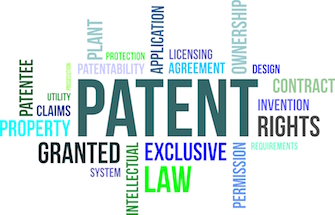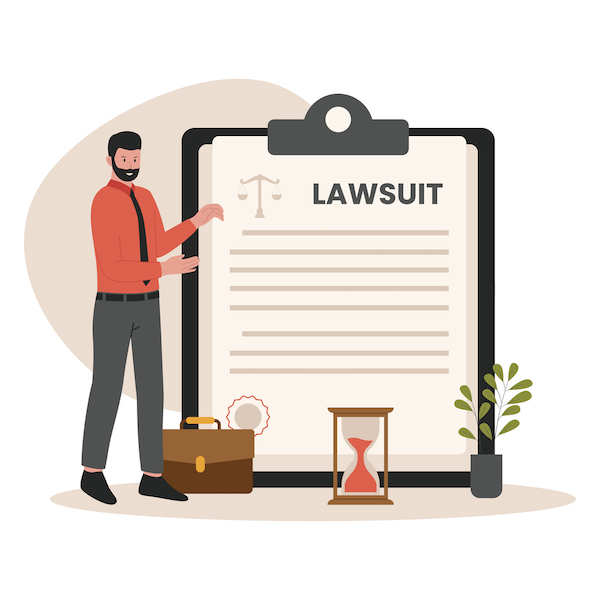 Last week I wrote about adopting a patent strategy in order to lay the foundation for success. What the article did not touch upon, however, is how you can use procedural mechanisms available at the Patent Office to expand your patent into a patent portfolio, or how to correct unforeseen problems with your patent (or portfolio) that may needlessly compromise your rights.
Last week I wrote about adopting a patent strategy in order to lay the foundation for success. What the article did not touch upon, however, is how you can use procedural mechanisms available at the Patent Office to expand your patent into a patent portfolio, or how to correct unforeseen problems with your patent (or portfolio) that may needlessly compromise your rights.
You need to keep a vigilant eye on your patent portfolio to continue to look for opportunities to expand your product line, and consequently expand your patent protection. You also need to understand that the name of the game is to get a patent, and getting any patent with a strategy for expanding your protection moving forward can be extremely useful. Of course, there is a difference between settling for narrow patent rights and taking what an examiner will give you and moving on to attempt to get more.
Invention is not a singular event, and neither is innovating. Succeeding in the marketplace with your innovation is a journey! With that in mind you really need to think in terms of building a patent portfolio rather than merely getting a single patent, at least if the invention you are protecting is commercially viable. What follows are some tools and strategies for successfully building meaningful patent rights.
Developing and building a patent portfolio quick
There are several strategies for developing a patent portfolio in a relatively short period of time. First, for an extra fee of $2,000 for small entities ($4,000 for large corporations) you can obtain a patent decision with 12 months. This means if you want or need a patent quickly you can get one very quickly now, and in the long run an accelerated prosecution will reduce the overall cost associated with obtaining a patent and virtually eliminate the opportunity costs associated with lengthy Patent Office delays.
Second, assuming you do not accelerate with the payment of a fee, you can file an application with a narrow claim set. With the average pendency in the USPTO being well over 2 years you need to have a prosecution strategy that is calculated to lead to easy, quick issuance. While the original disclosure needs to be sufficient to support the entire invention, there is no need to file a large number of claims in the original application. Filing a small number of claims, even exceptionally narrow claims, can significantly increase the likelihood that an examiner will quickly address an application. Examiners are not supposed to pick and choose which applications to take up next. The system is supposed to be first in first out, but if an examiner needs to get a quick clearance toward their quota it is not unheard of for them to take easy cases out of order.
Third, Patent Examiners are also now allowed credit for conducting an interview prior to undertaking work on a First Office Action on the Merits. Approaching the patent examiner and offering to discuss the invention prior to a Action on the Merits may pay dividends, particularly given that patent examiners can now obtain 2 full counts of credit toward their quota if they dispose of a case without need for a Final Rejection. So if they allow a case without need for Final Rejection they still get full credit even though they reduced the amount of time they needed to work on the file.
Fourth, maintenance fees are required to be paid in order to keep the patent from falling into the public domain. Maintenance fees are due at 3 ½ years after the date of issuance, 7 ½ years after the date of issuance and 11 ½ years after the date of issuance. Many inventors, particularly individual entrepreneurs, do not intend on making maintenance fee payments, which means their patents may be able to be inexpensively acquired. If you find a patent that you might like to acquire, you should look to see when the maintenance fees are due and if you can use that information to your advantage in a negotiation with the patent owner.
Fifth, design patents are frequently overlooked, but when acquired in bulk they can provide a quick, cost-effective means for building exclusivity. Design patents have gained in strength in recent years due to the altered infringement test, which no longer focuses on the point of novelty. The infringement analysis now focuses on the totality of the alleged infringing product and whether an ordinary lay observer would believe the allegedly infringing device is a copy of the patented invention. Design patents have been known to issue as quickly as 6 months after filing, and routinely issue within 12 months after filing. Anyone with a tangible product should not overlook design protection. Design protection is cheaper, easier and quicker to obtain than a utility patent, but do remember that you are getting protection on the way something looks, not the way it operates. Also remember that a single design patent may be useful for marketing purposes, but will be relatively easy to get around.
Building a patent portfolio: Going back for more patent protection
Just because you obtain a patent doesn’t mean you have exhausted the available protection that could be achieved from the patent application you filed. There are at least two strategies that will allow patent applicants and/or patent owners the ability to broaden their patent protection and/or patent portfolio. First, a patent applicant may file what is called a continuation, which is a second application for the same invention claimed in a prior non-provisional patent application, and is filed before the prior application becomes abandoned or patented. At any time before issuance, abandonment or other termination of proceedings in an earlier non-provisional patent application, an applicant may file a continuation in order to introduce new claims.
Filing a broad specification with narrow claims (as mentioned above) can lead to the issuance of a patent relatively quickly in some cases. Coupled with a continuation strategy you can get a patent issued and circle back for additional protection. This strategy can be critical for start-up companies and small businesses needing funding. Investors love patents, and if you can get one patent a sophisticated investor will know you can get more. So getting the first patent as quickly as possible and circling back for broader protection can help entice investors to provide critical funding necessary for business expansion and further patent protections. Getting narrow protection quickly but circling back for broader protection also shows a level of business sophistication and understanding of the innovation to patent process, which can also be a subtle message to investors.
While many will tell you that no new matter may be added to an application once it is filed, you can indeed add new matter through the use of a special kind of continuation application. A continuation-in-part is essentially the same as a continuation except for the fact that new matter is added to the application. The new matter will not enjoy the same filing date as the earlier filed patent application, but it can be added to previously filed matter through the use of a continuation-in-part application. By using a continuation-in-part application, or a CIP as it is called in the industry, you can file an application, obtain a patent and then add newly invented material into a continuation-in-part as you circle back for additional patent protections on the underlying specification. This may not be appropriate in all cases, but is an appropriate tool in some situations and should be discussed with your patent attorney or patent agent if you are represented.
Additionally, when it is discovered that a patent is somehow defective, whether wholly or partly inoperative, invalid or just because the patent applicant claimed less then he or she had a right to claim in the patent, the patent may be surrendered and ultimately reissued after further examination. If you claim less than you are entitled to you can go back for more, as long as you do this within two years of the patent being issued. This is called a broadening reissue. There is risk involved, and you must seek to broaden your patent within two years, but sometimes a reissue application can save you from certain mistakes, particularly the situation where an inventor represented themselves and received far less protection than available, which is sadly all too common.
Strengthen and continue building a patent portfolio
There are at least two ways to strengthen your patent. First, you can strategically utilize reexamination. This first method is admittedly a tactic that is not appropriate for those who are risk adverse, but done appropriately in the right circumstances it can be used to significantly strengthen a patent. Of course, all patents are presumed to be valid, but patents that have gone through reexamination are entitled to an even stronger presumption of validity, whatever that means. District courts struggle with what this black letter law means, but seem to agree that it is very difficult to invalidate patent claims that have emanated from reexamination. In fact, only in very rare instances has the United States Court of Appeals for the Federal Circuit declared a patent claim invalid after it had gone through reexamination.
A reexamination request can be filed anonymously, and it is only necessary to establish that a substantial new question of patentability exists as to any one of the patent claims in order to order reexamination. In the examination stage of the reexamination, normally all patent claims will be reexamined, even where the order has made a finding of a substantial new question for less than all of the patent claims.
Given that hindsight is always 20-20, mistakes and errors can and do come to light sometimes after a patent has issued. In this case consideration should be given to seeking a reissue. Unlike a reissue that seeks to broaden the scope of claim coverage, a narrowing reissue (i.e., any reissue that does not seek to broaden the scope of the claims) may be applied for at any time, assuming the patent is still in force. A narrowing reissue may be appropriate when a flaw or mistake is discovered in the claims that would render one or more claims wholly or partly inoperative or invalid. Furthermore, the failure to appreciate the full scope of the invention is an error correctable through reissue. You would not, however, use reissue to correct a clerical mistake in a patent. If the mistake is purely clerical in nature, such as a misspelling, you can use a Certificate of Correction.
Conclusion
While the universal truth is that most inventions do not ultimately succeed, if you don’t plan for success from day one and chart a course for achieving success you are almost certainly dooming yourself to fail. The more thought and consideration you give to the immediate, short-term, intermediate and long-term strategies you will employ, both in terms of protection and innovation, the more attractive your company will be to investors, and the more likely you will be to succeed.
For more information on patent basics please see:
- Patent Basics: Practice Tips for Achieving Success in Inter Partes Reviews
- An Alternative to Claim Mirroring in Initial Patent Application Filing
- IP Goes Pop! You Can’t Do That – What IP Cannot Protect
- How to Use the USPTO Patent Public Search Tool
- Using Analytics to Assess the Effectiveness of Common Patent Prosecution Practices
- Tips from a Former Examiner on How to Conduct Interviews at the USPTO
- Ten Mistakes to Avoid When Drafting Information Disclosure Statements
- Defanging Descriptive Material Rejections
- Can You Refile a Provisional Patent Application?
- Ten Common Patent Claim Drafting Mistakes to Avoid
- It’s All in the Hardware: Overcoming 101 Rejections in Computer Networking Technology Classes
- Disclosure Requirements in Software Patents: Avoiding Indefiniteness
- Patent Procurement and Strategy for Business Success Part III: Prosecution – Wielding an Invisible Hand
- Patent Procurement and Strategy for Business Success Part II: Claims – Targeting the Right Infringers
- Patent Procurement and Strategy for Business Success: Building and Strategically Using Patents that Target the Right Infringers and Thwart Competitive Countermeasures
- Fit to Drive: Three Inspiring Office Action Responses from the USPTO’s Art Unit 3668
- Design Patents 101: Understanding Utility Patents’ Lesser-Known Cousin
- Two Key Steps to Overcome Rejections Received on PCT Drawings
- Errors in Issued Patents as a Measure of Patent Quality
- Intellectual Property for Startups: Building a Toolkit to Protect Your Products and Design
- Why the Patent Classification System Needs an Update
- Understanding What a Design Patent is Not
- Design Patents: Under Utilized and Overlooked
- Deciding Where to Obtain International Patent Rights
- When to Use the Patent Cooperation Treaty—and Why It’s So Popular
- Why and When Design Patents are Useful
- PCT Basics: Obtaining Patent Rights Around the World
- ipAwarenessAssessment: Inventors and Business Owners Should Start Their IP Journey with this USPTO-NIST Tool
- Successful After Final Petitions Can Help Advance Prosecution (Part V)
- From Agent to Examiner and Back Again: Practical Lessons Learned from Inside the USPTO
- WIPO’s INSPIRE Offers a New Way to Select Databases for Patent Searches Involving Machine Translations
- Understand Your Utility Patent Application Drawings
- Why It’s Time to Board the PCT Train: The Benefits of Filing U.S. Patent Applications via the PCT First
- Implications of Filing Subsequent Patent Applications in the United States (Part III)
- Types of Subsequent Patent Applications in the United States (Part II)
- Getting a Patent: The Devastating Consequences of Not Naming All Inventors
- Getting A Patent: Who Should be Named as An Inventor?
- Make Your Disclosures Meaningful: A Plea for Clarity in Patent Drafting
- Applying for a Patent in Germany
- Autopilot or Advocate? Raising the Bar in Ex Parte Appeals at the USPTO
- Time to ‘Think PCT’: Rethink Your Global Patent Strategy to Preserve Your Seat at the Table
- Patent Office Insights from Two Former Examiners
- Conventional Patent Wisdom Revisited
- Develop Your Database of Templates for Responding to Office Actions
- Background Pitfalls When Drafting a Patent Application
- Eight Tips to Get Your Patent Approved at the EPO
- Four Things C-Suite Executives Need to Know About Patents
- Starting the Patent Process on a Limited Budget
- What to Know About Drafting Patent Claims
- Beyond the Slice and Dice: Turning Your Idea into an Invention

![[IPWatchdog Logo]](https://ipwatchdog.com/wp-content/themes/IPWatchdog%20-%202023/assets/images/temp/logo-small@2x.png)

![[[Advertisement]]](https://ipwatchdog.com/wp-content/uploads/2018/10/Enhance-1-IPWatchdog-Ad-2499x833-1.png)
![[[Advertisement]]](https://ipwatchdog.com/wp-content/uploads/2018/08/Ad-1-The-Invent-Patent-System™-1.png)
![[Advertisement]](https://ipwatchdog.com/wp-content/uploads/2024/04/Patent-Litigation-Masters-2024-sidebar-early-bird-ends-Apr-21-last-chance-700x500-1.jpg)

![[Advertisement]](https://ipwatchdog.com/wp-content/uploads/2021/12/WEBINAR-336-x-280-px.png)
![[Advertisement]](https://ipwatchdog.com/wp-content/uploads/2021/12/2021-Patent-Practice-on-Demand-recorded-Feb-2021-336-x-280.jpg)
![[Advertisement]](https://ipwatchdog.com/wp-content/uploads/2021/12/Ad-4-The-Invent-Patent-System™.png)







Join the Discussion
One comment so far.
Joachim Martillo
May 10, 2015 08:54 amDoesn’t a meaningful patent strategy need to take into account players like Hayman Capital? In addition, I have seen no evidence that SAWS is truly retired. And what about other secret “quality assurance systems”?
We could only be certain that the USPTO would forego such nonsense if the US government renounced GATT IP rules and returned the system to start a 17 year clock running from the date of grant. Then the USPTO would not be able to cripple a patent simply by delaying the allowance. In fact, starting term from the date of allowance would give an incentive to quicker prosecution because a big delay could transform an ordinary patent into the dreaded submarine.